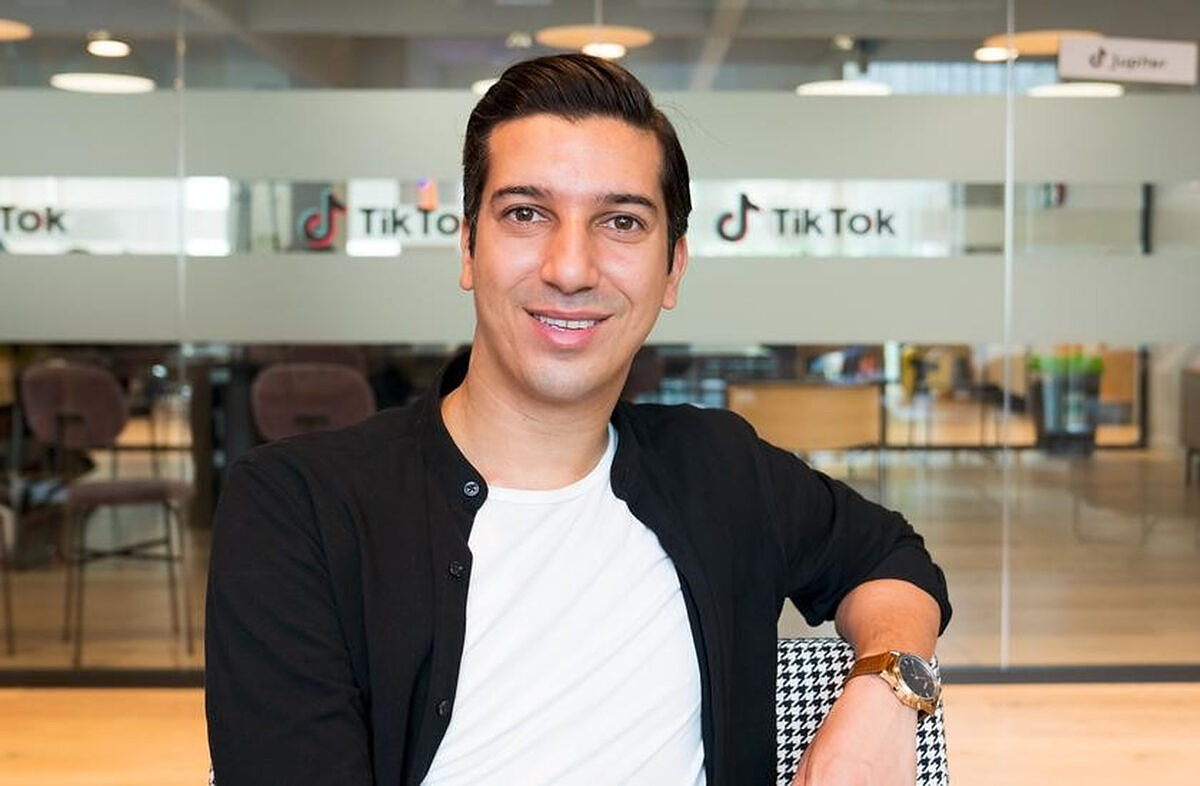Turning user generated entertainment into money on TikTok
Tiktok will be one of the hotly discussed new players in the social media environment at DMEXCO. We spoke to Inam Mahmood, who intends to show European marketers how they can earn money with singing and dancing.

Is it a social media shooting star or just a flash in the pan? For some Tiktok is the brightest star on the social media horizon, whereas others see it as yet another useless gimmick for children and teenagers. But somehow the app from China, which was one of the most downloaded apps worldwide in the last nine months (as we reported), seems to be onto something.
User generated entertainment for the next generation
While hardly anyone is talking about Facebook’s copycat Lasso anymore, teenagers in particular are extremely excited about this original Chinese network. Tiktok is primarily used to enable young people to lip-sync current pop hits in short video clips and underlay them with optical effects, filters and emojis. Little magic tricks or dance interludes as well as short comedy snippets are also among the content that the often very young protagonists perform.
How to convert fun into money
It sounds like a whimsical pastime for minors, but is there a resilient business model behind it? That’s what we talked about with Inam Mahmood. He should know because, as Director Monetization and Partnerships for the European market, he intends to make Bytedance, the Chinese company behind the app, successful and show marketers in Europe how they can use the network to convey their content.
"Tiktok stands for creative, entertaining and positive experiences - the most successful brands combine creativity and authenticity."
DMEXCO: Tiktok has been launched as a new social media platform that is especially fun for young people. Fun is great, but what about monetization? How do you want to earn money with it?
Inam Mahmood: You have addressed a very important topic for us. Fun as well as creativity and positive experiences are key elements of Tiktok and decisive for the enthusiasm of our community for the platform. We enable everyone to express themselves creatively and share their passions right on their smartphone. We are currently testing different formats with brands and making sure that these formats really fit Tiktok. The user experience is of utmost importance to us. At its core, Tiktok is a platform for creative, entertaining and positive experiences – and the brands that we think are most successful are those that combine creativity and authenticity.
DMEXCO: At DMEXCO you will be presenting the first cases for Europe. Could you provide a sneak preview?
Inam Mahmood: Sure. The collaboration with Otto and Samsung, which we will be talking about at DMEXCO, pretty much demonstrates how we imagine advertising formats that aren’t intrusive on Tiktok. Together with us, advertisers can develop content and challenges that are relevant for the entire Tiktok community. This enables us to translate corporate messages into experiences for our users.
"We want to test out with our community what creates a real added value."
DMEXCO: You only have four advertising formats so far, which is pleasingly straightforward in comparison to competitors. Will it stay that way?
Inam Mahmood: It is very important to us to concentrate exclusively on formats that fit the basic idea of Tiktok. With this in mind, we develop many features, test a lot and try to be flexible in providing formats that really improve the experience of our community. That’s why we don’t want to commit ourselves to a certain number of formats, but to experiment and test together with our community, which creates real added value.
DMEXCO: For which types of brands and products is Tiktok most suitable?
Inam Mahmood: Our community is extremely heterogeneous and yet many of our users are enthusiastic about similar topics, which they fill with creative content from their respective perspectives. At the same time, this diversity means that some users will naturally connect more to certain topics. It is therefore quite possible to also address specific subjects, which are then intensively discussed within a specific target group. Tiktok has thus become a platform for a wide range of brands to reach a large target group in an entertaining and activating way. The spectrum is huge and ranges from large sports clubs such as Borussia Dortmund or FC Bayern to film production companies, fashion brands and food producers.
"Instead of high gloss and a perfect world, people today increasingly expect immediacy, authenticity and closeness."
DMEXCO: User-generated content is a risky advertising environment, as advertisers have been aware of at least since the advent of Youtube. How do you make sure advertisers will find their brands in a positive environment? Some of the videos on Tiktok don’t provide a very “glossy” setting…
Inam Mahmood: We are observing – and not only on our own platform – that many people’s expectations of social media, but also of advertising and consumption in general are fundamentally changing. Instead of high gloss and a perfect world, people are increasingly expecting immediacy, authenticity and closeness. With Tiktok, we offer precisely this type of environment. In our global community, the entry barrier to getting involved in a topic is very low. Anyone can join in.
DMEXCO: Especially in light of your young target group, the subject of youth protection must be high on your list of priorities. How do you ensure parents feel it is safe for their kids to be active on Tiktok?
Inam Mahmood: Our top priority is to provide a positive and safe environment for users. We do a lot to provide the community with the right tools, support and information so that each user has maximum control over their account, the content they publish and their connections to other users on Tiktok. We have made it easy for users to implement numerous data protection measures. For example, it is simple to set your account to private, determine who can see and interact with what, and block other users if necessary. We have also created and implemented community policies using a combination of innovative technology and moderation teams. This enables us to check critical content quickly and efficiently. We are very aware of the importance of this topic and are actively committed to it, for example through our Digital Wellbeing Tool.
"We're still discovering what works for our community."
DMEXCO: You have already gained international experience in monetization. What differences do you see between the markets in the Far East and (Western) Europe, for example? Are there certain empirical values as to what works and what doesn’t in Europe?
Inam Mahmood: As I am responsible for the European market, I can’t really speak for the others. Tiktok is active in more than 150 countries throughout the Americas, Europe and Southeast Asia. Of course, every market is different and has its own culture. However, all the markets also have common denominators such as the great popularity of our challenges. We are still on a learning curve and discovering what works and “ticks” for our community. What we have learned so far is that there is no “one formula” or “one recipe for success” that works equally well in every country.
The bottom line
Tiktok is extremely popular among young people, but still has to prove its potential as a marketing tool. After all, we have seen a lot of crazy ideas in recent years, especially in the area of social media. Nevertheless, it is precisely the approach to successful business models that was previously inconceivable that makes such platforms so attractive. Brands that are also or especially aimed at a young target group will not be able to circumvent the phenomenon of sing-along clips and fun challenges.
Inam Mahmood is Director Monetization & Partnerships at Tiktok Europe, the video clip app provided by Bytedance. In this role, Inam oversees monetization and brand partnerships for the European market. Prior to joining Tiktok, Inam played a key role in the growth of several mobile and video start-ups including the award-winning creative mobile communications company Adludio, where he was responsible for strategy and customer relations.





